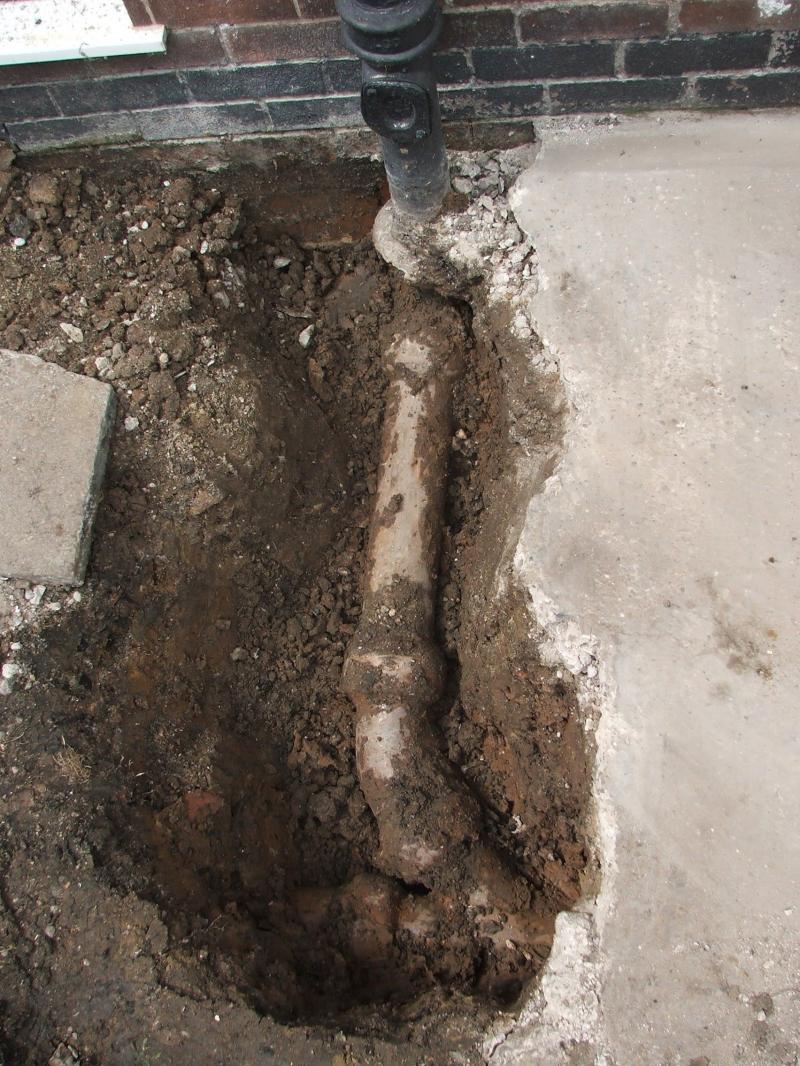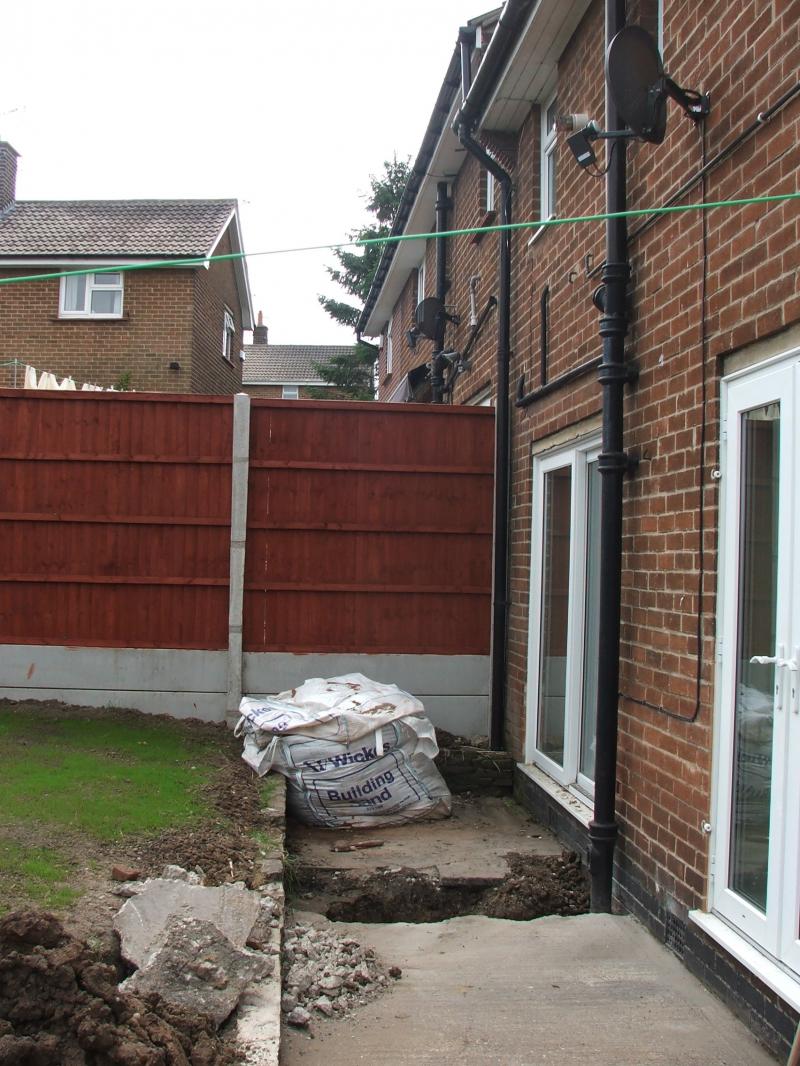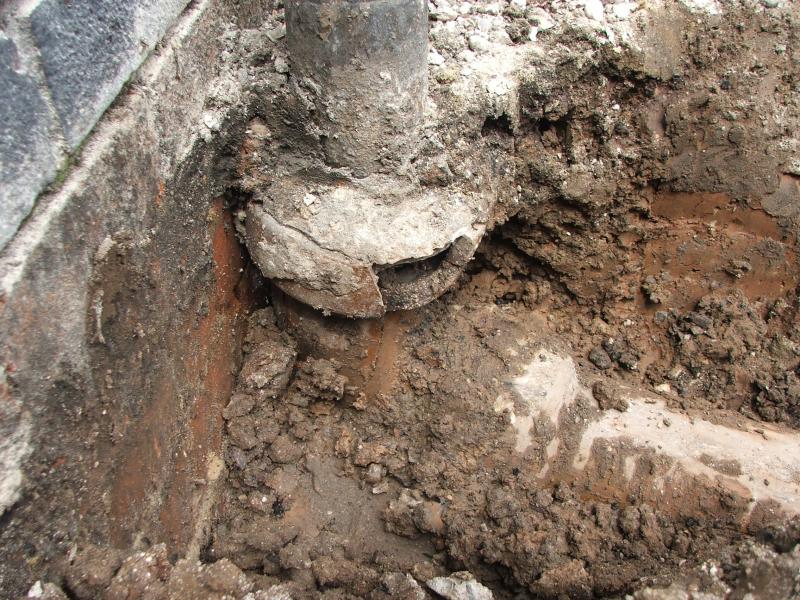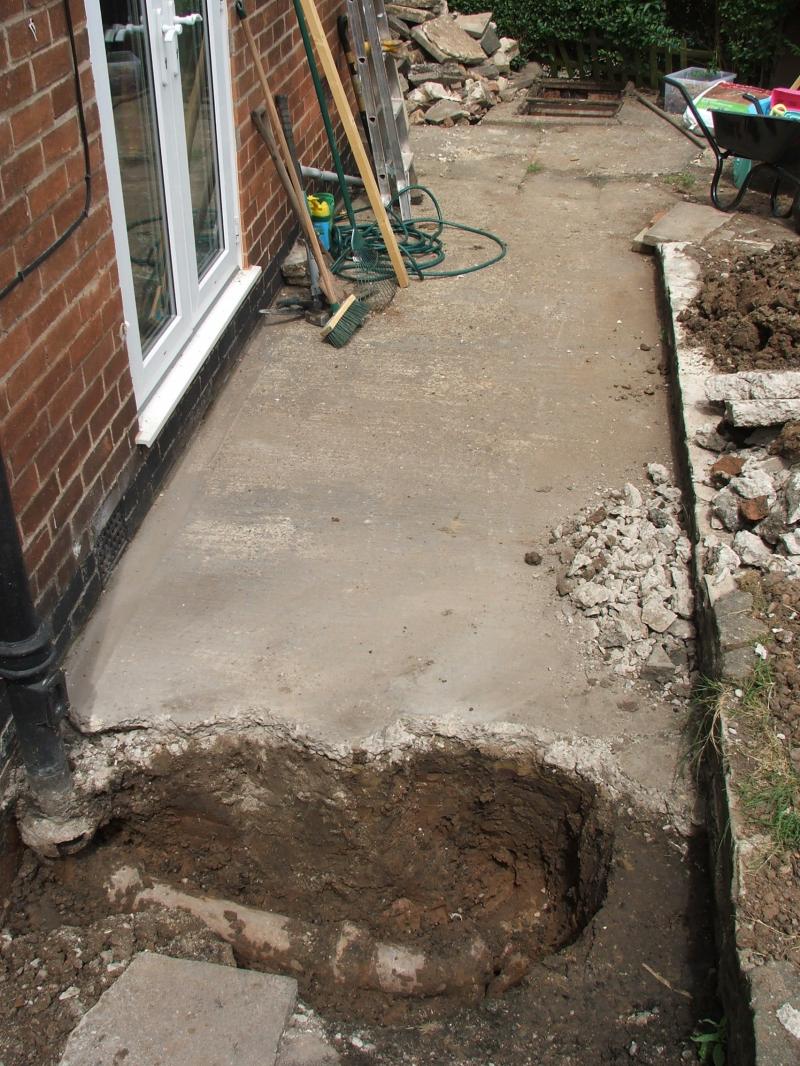Hi, I'm a new user and hope someone can give me some advice please. I posted in plumbing previously but was advised to try here in building instead. 
We have an old cast iron soil pipe which we want to replace and hopefully move to a new location (only a couple of feet along same exterior wall). Job needs doing anyway as stack is fractured in top section and may soon fall down, but we also want to build a conservatory adjoining the wall where the stack is now (don't want it boxed in so would prefer to move it along a bit).
I am OK with most of the above ground work but unsure how to proceed with the underground section. I have part excavated it and found the old conversion piece/collar where the cast iron pipe joins the clay(?) foul sewer. The collar, short vertical section and bend (to run out to connect to main sewer line)are badly broken - they were only held together by the soil . I haven't yet excavated as far as the connection with the main run of the sewer - but it looks like it will be either a 45 or 90 degree tee joint.
Can I simply replace the soil stack with plastic and tee into the main sewer run in new position (replacing section where existing tee joint is) with plastic? (hope this is all clear enough).
Also, to save taking new stack through roof line can I fit an external AAV at top (I read something about build up of positive pressure possibly being a problem where there was no other vent to outside).
Many thanks - sorry for long post. Will attempt to attach pics below!
We have an old cast iron soil pipe which we want to replace and hopefully move to a new location (only a couple of feet along same exterior wall). Job needs doing anyway as stack is fractured in top section and may soon fall down, but we also want to build a conservatory adjoining the wall where the stack is now (don't want it boxed in so would prefer to move it along a bit).
I am OK with most of the above ground work but unsure how to proceed with the underground section. I have part excavated it and found the old conversion piece/collar where the cast iron pipe joins the clay(?) foul sewer. The collar, short vertical section and bend (to run out to connect to main sewer line)are badly broken - they were only held together by the soil . I haven't yet excavated as far as the connection with the main run of the sewer - but it looks like it will be either a 45 or 90 degree tee joint.
Can I simply replace the soil stack with plastic and tee into the main sewer run in new position (replacing section where existing tee joint is) with plastic? (hope this is all clear enough).
Also, to save taking new stack through roof line can I fit an external AAV at top (I read something about build up of positive pressure possibly being a problem where there was no other vent to outside).
Many thanks - sorry for long post. Will attempt to attach pics below!










